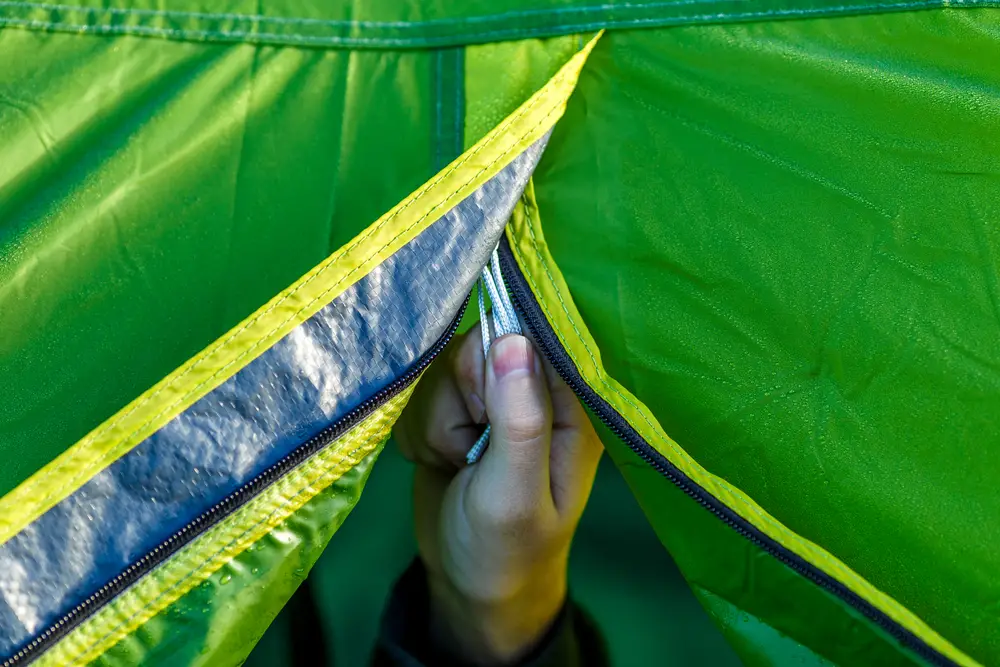I. Introduction to Fixing a Tent Zipper

A. Understanding the Importance of a Functional Tent Zipper
- Recognizing the Role of a Zipper in Protecting Your Tent from the Elements A functional tent zipper is essential for protecting your tent from the elements, including rain, wind, and insects.
- Embracing the Benefits of Knowing how to Repair a Damaged Tent Zipper Knowing how to repair a damaged tent zipper allows you to extend the lifespan of your tent and avoid costly replacements. It provides a sense of self-sufficiency, enabling you to address zipper issues promptly and continue using your tent without major disruptions.
II. Assessing the Zipper Problem
A. Identifying the Nature of the Zipper Issue
- Examining Stuck, Jammed, Broken, or Separated Zippers Identifying the specific problem with the tent zipper, whether it is stuck, jammed, broken, or separated, guides the repair process. Each issue requires a different approach for effective resolution.
- Understanding the Specific Problem to Determine the Appropriate Repair Technique Understanding the specific problem helps determine the appropriate repair technique.
B. Evaluating the Extent of the Damage
- Assessing Zipper Teeth, Slider, and Fabric Integrity Inspecting the zipper teeth, slider, and fabric integrity helps assess the extent of the damage. Checking for missing, bent, or misaligned teeth, as well as broken or malfunctioning sliders, provides insight into the repair requirements. Examining the fabric for tears or fraying ensures that the zipper repair will be effective.
- Determining if the Zipper Can Be Repaired or Requires Replacement Based on the assessment of the zipper’s condition, it can be determined whether the zipper can be repaired or if it needs replacement. In some cases, a simple repair is sufficient, while in other instances, a complete zipper replacement may be necessary.
III. Quick Fixes for Temporary Solutions

A. Lubricating the Zipper
- Applying Lubricants or Wax to Loosen a Stuck or Jammed Zipper Applying lubricants, such as silicone spray or zipper wax, helps to loosen a stuck or jammed zipper. These substances reduce friction between the zipper teeth, allowing smoother movement and easier opening and closing.
- Using Household Items as Quick Lubrication Alternatives In the absence of specific lubricants, household items like bar soap, lip balm, or pencil lead can be used as temporary lubrication alternatives. Rubbing these substances along the zipper teeth can provide temporary relief and facilitate zipper movement.
IV. Repairing a Damaged Zipper
A. Repairing Zipper Teeth
- Realigning and Reconnecting Misaligned or Separated Zipper Teeth To repair misaligned or separated zipper teeth, gently realign the teeth using your fingers or a pair of needle-nose pliers. Carefully guide the teeth back into their proper position, ensuring they interlock smoothly. Apply light pressure to reconnect the teeth, starting from the bottom and working your way up.
- Fixing Broken or Missing Teeth with Replacement Parts If a zipper tooth is broken or missing, it may need to be replaced. Purchase replacement zipper teeth or complete zipper repair kits from a sewing or outdoor gear store. Follow the manufacturer’s instructions to remove the damaged tooth and install the replacement tooth. Use pliers to secure the new tooth in place.
B. Fixing Slider Issues
- Replacing or Realigning a Damaged or Malfunctioning Slider If the slider is damaged or malfunctioning, it may need to be replaced. Purchase a compatible replacement slider from a sewing or outdoor gear store. Remove the old slider by gently prying or sliding it off the zipper tape.
- Ensuring Proper Alignment for Smooth and Secure Zipper Operation Proper alignment of the slider is crucial for smooth and secure zipper operation. If the slider is misaligned, gently adjust it with your fingers or pliers. Avoid forcing the slider, as it may cause further damage to the zipper.
V. Preventative Maintenance and Care
A. Regular Cleaning and Lubrication
- Removing Dirt, Debris, and Salt Residue for Smooth Zipper Functionality Regularly clean the zipper to remove dirt, debris, and salt residue, especially if the zipper is exposed to outdoor or marine environments. Use a soft brush or toothbrush to gently scrub the zipper teeth and tape. Rinse with water and allow it to dry completely before operating the zipper.
- Applying Lubricants to Prevent Zipper Corrosion and Sticking Apply a small amount of zipper lubricant or wax to the zipper teeth and slider to prevent corrosion and sticking. Use a specialized zipper lubricant or wax recommended by the manufacturer. Apply the lubricant sparingly and distribute it evenly by operating the zipper several times.
B. Gentle Handling and Usage
- Using Careful Techniques when Operating the Zipper to Prevent Damage Handle the zipper with care and avoid applying excessive force when opening or closing it. Guide the slider smoothly along the teeth without pulling or yanking. Avoid forcing the zipper if it becomes stuck, as this may cause damage to the teeth or slider.
- Avoiding Excessive Force or Rough Handling that Could Cause Zipper Issues Refrain from subjecting the zipper to excessive force or rough handling, as this may lead to zipper issues. Avoid pulling or tugging on the zipper forcefully, especially when it is partially or fully closed. Handle the zipper gently to maintain its integrity and prolong its lifespan.
Knowing how to fix a tent zipper is an essential skill for outdoor enthusiasts. Embrace the art of tent zipper repair and enjoy uninterrupted camping adventures with a fully-functional zipper.
